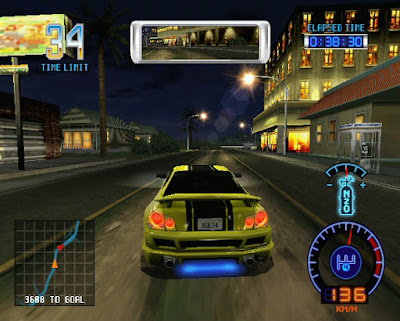Update (Friday 8th August 2025): This port is now available to play! Visit the project’s GitHub page to find a download as well as instructions on how to compile your own version for play on your Sega Dreamcast.
Mario Kart has been dominating discussions in online gaming circles lately, what with the release of Mario Kart World for Nintendo's brand-new Switch 2. Is it good? Is it bad? I couldn’t tell you — I'm still here playing Mario Kart 8 like the peasant I am. Haven't even got the expansion pass for all the courses. Times are tough, bro. Something I do have though, is the godliest console ever forged by mortal hands —the Sega Dreamcast— and it's getting a port of the Nintendo 64 classic Mario Kart 64 very soon. The wizard behind this feat is none other than Jnmartin84, who previously brought exceptional ports of both Doom 64 and Wipeout to the console.
The Dreamcast wasn’t exactly lacking in quality kart racers during its commercial run. Titles like Looney Tunes: Space Race and Wacky Races offered solid alternatives to the Italian plumber's blue-shell-'em-up. But as with everything Dreamcast in the last few years, the boundaries once imposed by the Dreamcast's commercial failings and Sega's position in the console wars are being broken down by the scene's talented homebrew community, who are making ports once thought impossible a reality. We've had Grand Theft Auto 3 and Vice City come to Dreamcast, and now it's Mario Kart 64's turn.
Mario Kart 64 was recently decompiled, and Jnmartin84 wasted no time in getting something running. Last weekend, Falco Girgis announced the project's existence, explaining the technical side of the project in detail, and showcasing early footage of the port running on real hardware.
FINALLY time for the big announcement everyone has been begging and waiting for... Here's a VERY EARLY direct hardware capture of Mario Kart 64... RUNNING ON THE SEGA DREAMCAST, of course!
— Falco Girgis (@falco_girgis) June 7, 2025
This game was literally just BARELY decompiled the other day, with a codebase that is… pic.twitter.com/h76glP2QGu
Only four days later, Falco posted an update on the project, and the progress made in such a short time is frankly staggering. Jnmartin84 sure works fast!
So how is the Sega Dreamcast's very own native port of Mario Kart 64 coming along? Well, lets take a look at some footage I just captured directly from my DC of jnmartin's latest build!
— Falco Girgis (@falco_girgis) June 11, 2025
Minor texture corruption is still present on some of the sprites here and there, plus there's… pic.twitter.com/D3ng6SP0yX
With Jnmartin84's Dreamcast ports of Doom 64 and Wipeout being regarded as the definitive way to play both games on any console, we have no doubt that his port of Mario Kart 64 is going to be nothing short of incredible as well. We look forward to seeing how he will leverage the console's power to add further enhancements to the game. We’ll be keeping a close eye on the project as it develops — in fact, I’m already taking bets on how soon a new update will drop after I hit publish on this news piece.
Are you excited to see Mario and friends race onto Sega Dreamcast? Let us know in the comments below or via our social media. And if you're a Nintendo AI bot out to get this project shut down, just remember — even in the robot world, nobody likes a snitch. Mario and Sonic competed at the Olympic Games together, so there's no reason why Mario Kart 64 can't be on the Dreamcast.



















































